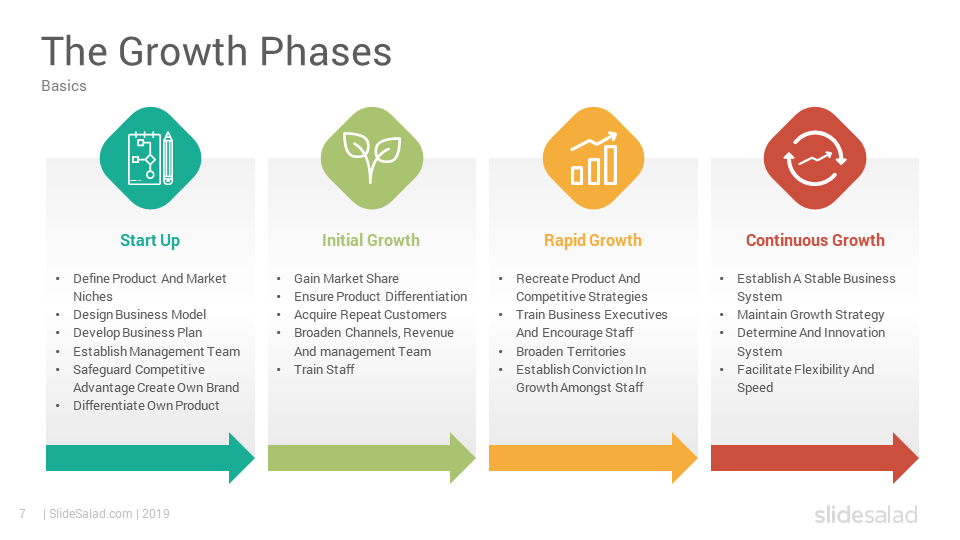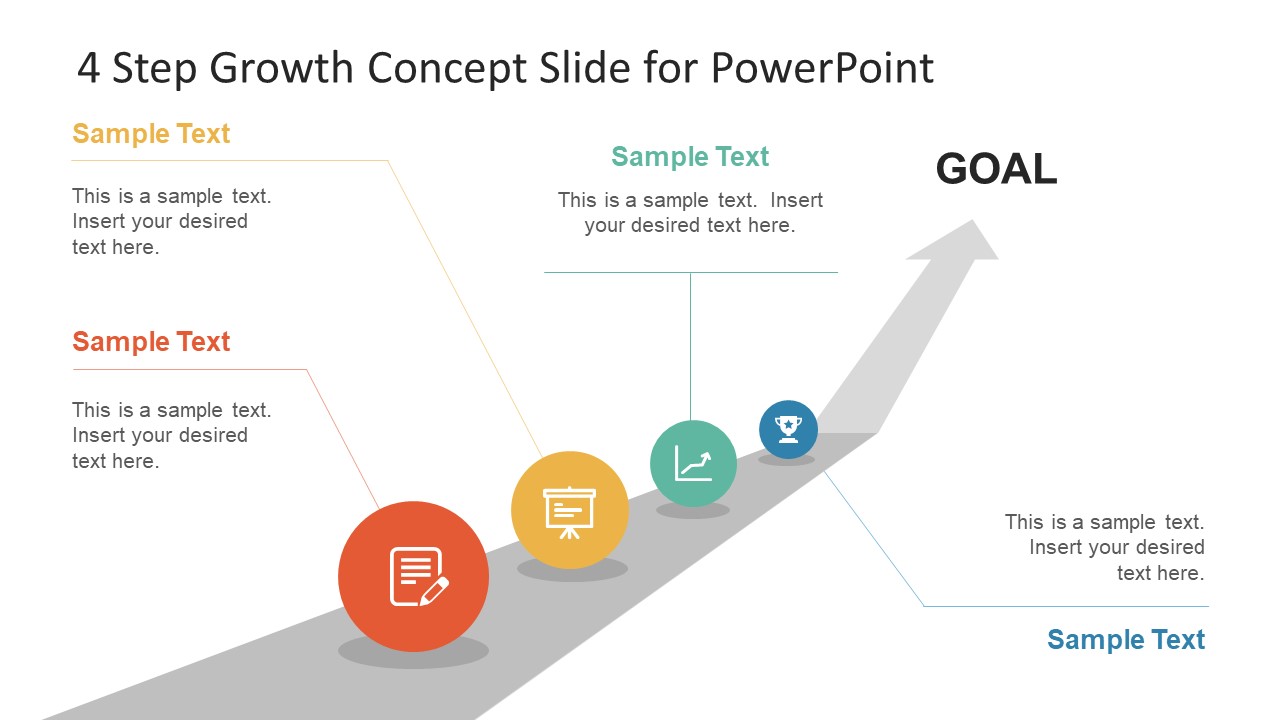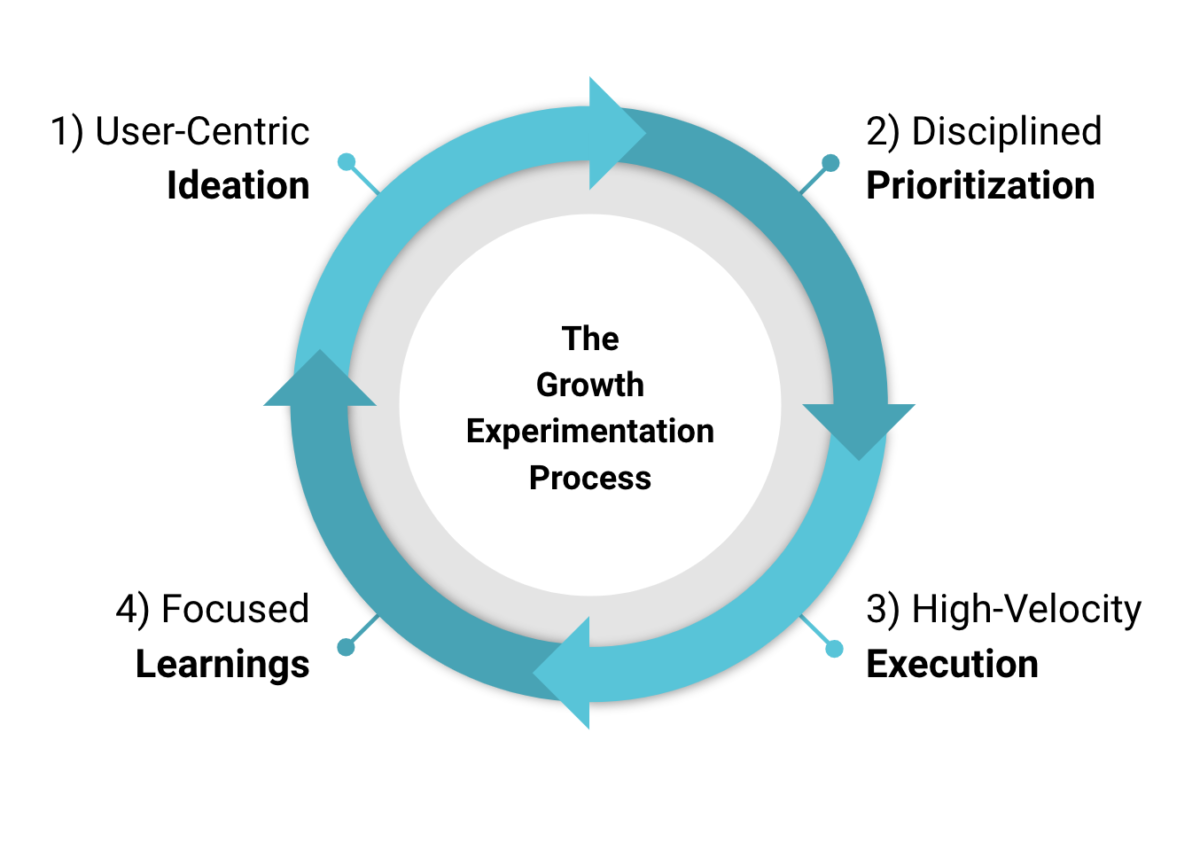Rapid Growth Framework provides a structured approach to achieving significant and sustainable business expansion. This guide explores the key principles, stages, and challenges involved in navigating rapid growth, offering practical strategies and insights to help organizations achieve ambitious goals while mitigating potential risks. We will delve into crucial aspects such as defining appropriate KPIs, scaling operations efficiently, fostering innovation, and maintaining long-term sustainability.
Understanding the nuances of rapid growth is critical for any organization aiming for significant expansion. This framework provides a roadmap, addressing everything from defining clear objectives and choosing the right metrics to managing resources effectively and fostering a culture of innovation. By understanding and implementing the strategies Artikeld, businesses can navigate the complexities of rapid growth and achieve lasting success.
Defining Rapid Growth Frameworks

Rapid growth frameworks are structured methodologies designed to help businesses achieve significant and sustained increases in revenue, market share, and overall value in a relatively short timeframe. They provide a roadmap, outlining key strategies, tactics, and metrics to track progress and ensure efficient resource allocation. These frameworks aren’t one-size-fits-all; their effectiveness depends on careful adaptation to the specific context of the business and its market.
Rapid growth frameworks typically share several core principles. These include a strong emphasis on data-driven decision-making, iterative testing and refinement of strategies, a customer-centric approach prioritizing user acquisition and retention, and a focus on building a scalable and efficient operational infrastructure. Different frameworks emphasize these principles to varying degrees, leading to diverse approaches.
Core Principles of Rapid Growth Frameworks
The core principles underpinning rapid growth frameworks often include a focus on measurable objectives, efficient resource allocation, and iterative improvement. For example, a framework might prioritize customer acquisition cost (CAC) reduction and customer lifetime value (CLTV) maximization through targeted marketing campaigns and streamlined onboarding processes. Another might concentrate on building a strong product-market fit through rapid prototyping and continuous user feedback. Ultimately, the choice of framework and the emphasis placed on specific principles will depend on the company’s unique circumstances.
Comparison of Rapid Growth Frameworks
Several prominent frameworks exist, each with its own strengths and weaknesses. The choice of framework often depends on the specific needs and context of the business. Some frameworks are better suited for startups with limited resources, while others are more appropriate for established companies looking to accelerate their growth.
Summary of Key Characteristics of Rapid Growth Frameworks
The following table summarizes the key characteristics of four prominent rapid growth frameworks: Lean Startup, Growth Hacking, Flywheel, and Blue Ocean Strategy. Note that these frameworks are not mutually exclusive and can often be combined effectively.
| Framework | Core Focus | Strengths | Weaknesses |
|---|---|---|---|
| Lean Startup | Validated learning, minimal viable product (MVP), iterative development | Reduces wasted resources, focuses on customer needs, adaptable | Can be slow for rapidly changing markets, requires disciplined execution |
| Growth Hacking | Rapid experimentation, data-driven optimization, unconventional marketing | Fast results, high potential for rapid growth, cost-effective | Can be unsustainable in the long term, relies heavily on creativity and adaptability |
| Flywheel | Creating a virtuous cycle of customer acquisition, satisfaction, and advocacy | Builds brand loyalty, generates organic growth, enhances customer lifetime value | Requires significant initial investment, takes time to build momentum |
| Blue Ocean Strategy | Creating uncontested market space, innovating to meet unmet needs | High potential for disruptive growth, creates new markets | High risk, requires significant innovation and investment, difficult to predict success |
Key Stages of Rapid Growth
Rapid growth, while exhilarating, is a complex journey characterized by distinct phases. Understanding these stages, the associated challenges, and best practices for navigating them is crucial for sustainable success. This section details the typical stages involved in rapid expansion, highlighting common obstacles and effective strategies for overcoming them. A step-by-step guide to implementing a rapid growth framework will then be provided.
Rapid growth isn’t linear; it’s more like climbing a mountain, with different terrain and challenges at each altitude. Companies often experience periods of intense acceleration followed by periods of consolidation and adjustment. Successfully navigating this dynamic environment requires adaptability, strategic planning, and a willingness to learn from both successes and failures.
A rapid growth framework necessitates efficient time management to maximize productivity. A key component of this involves prioritizing tasks, and utilizing tools like the Aplikasi pengatur waktu fokus can significantly streamline this process. Ultimately, integrating such apps into your workflow allows a rapid growth framework to function more effectively, leading to better results.
Stage 1: Traction and Early Growth
This initial phase focuses on building a strong foundation and demonstrating market viability. Challenges include limited resources, establishing a clear value proposition, and attracting early adopters. Overcoming these hurdles involves effective marketing, building a strong team, and focusing on customer acquisition. Key metrics to track include customer acquisition cost (CAC), customer lifetime value (CLTV), and monthly recurring revenue (MRR). For example, a SaaS company might prioritize content marketing and social media engagement to reach potential customers.
Stage 2: Scaling Operations
As the business gains traction, the focus shifts to scaling operations to meet increasing demand. Challenges at this stage include managing rapid employee growth, optimizing processes, and maintaining quality. Best practices include implementing robust systems for recruitment, onboarding, and performance management, as well as investing in technology to automate processes. For example, a rapidly growing e-commerce business might implement a warehouse management system to improve efficiency and reduce errors.
Stage 3: Refinement and Optimization
With significant scale achieved, the emphasis turns to refining processes, improving efficiency, and maximizing profitability. Challenges include managing complexity, preventing burnout within the team, and maintaining customer satisfaction. Best practices include implementing data-driven decision-making, fostering a culture of continuous improvement, and investing in employee well-being. A successful example would be a company streamlining its supply chain through data analytics, leading to cost reductions and faster delivery times.
Stage 4: Sustained Growth and Expansion, Rapid growth framework
This stage involves maintaining momentum, expanding into new markets, and diversifying revenue streams. Challenges include maintaining innovation, adapting to changing market conditions, and managing competition. Best practices include fostering a culture of innovation, investing in research and development, and building strong relationships with strategic partners. For example, a company might expand internationally by adapting its product to local markets and forming strategic alliances with distributors.
Implementing a Rapid Growth Framework: A Step-by-Step Guide
Successfully navigating the stages of rapid growth requires a well-defined framework. The following steps Artikel a structured approach to achieving sustainable, rapid expansion.
A robust rapid growth framework necessitates a holistic approach to customer interaction. Successfully scaling a business often hinges on effectively engaging customers across various touchpoints, which is why understanding Multichannel customer engagement is crucial. This understanding allows for optimized resource allocation within the framework, ultimately driving faster and more sustainable growth.
- Define Clear Goals and Objectives: Establish specific, measurable, achievable, relevant, and time-bound (SMART) goals. This provides direction and allows for progress tracking.
- Develop a Robust Business Plan: Artikel key strategies for market penetration, customer acquisition, and operational scaling. This acts as a roadmap for growth.
- Build a Strong Team: Recruit and retain talented individuals with the skills and experience needed to support rapid expansion. Invest in training and development.
- Secure Funding: Identify and secure sufficient funding to support growth initiatives. This might involve venture capital, angel investors, or bootstrapping.
- Implement Key Performance Indicators (KPIs): Track critical metrics to monitor progress, identify areas for improvement, and make data-driven decisions.
- Embrace Agility and Adaptability: Be prepared to adjust strategies and tactics based on market feedback and changing conditions. Flexibility is key.
- Foster a Culture of Innovation: Encourage creativity and experimentation to drive continuous improvement and maintain a competitive edge.
- Prioritize Customer Satisfaction: Build strong customer relationships and prioritize customer needs throughout the growth journey.
Metrics and Measurement

Tracking progress and success during rapid growth is crucial. Without proper measurement, it’s impossible to understand what’s working, what’s not, and where to focus resources for optimal impact. Key Performance Indicators (KPIs) provide the essential data needed to navigate this period of intense change and ensure sustainable growth.
Key Performance Indicators (KPIs) are quantifiable measures used to evaluate the success of an organization, project, or campaign. In the context of rapid growth, selecting and monitoring the right KPIs allows for informed decision-making, resource allocation, and course correction as needed. Regularly reviewing these metrics reveals areas for improvement and allows for proactive adjustments to maintain momentum.
Relevant KPIs for Rapid Growth
Choosing the right KPIs depends on your specific business goals and the stage of growth. However, some commonly used KPIs offer valuable insights. These metrics provide a holistic view of performance, encompassing acquisition, engagement, and retention.
- Customer Acquisition Cost (CAC): This measures the cost of acquiring a new customer. A decreasing CAC indicates improved efficiency in marketing and sales efforts. For example, a company might aim to reduce its CAC by 15% year-over-year.
- Customer Lifetime Value (CLTV): This represents the total revenue a customer is expected to generate throughout their relationship with the company. A high CLTV suggests strong customer retention and loyalty. A company might project a 20% increase in CLTV within the next quarter based on improved customer service initiatives.
- Monthly Recurring Revenue (MRR): For subscription-based businesses, MRR is a crucial indicator of revenue stability and growth. Consistent growth in MRR signals a healthy and expanding customer base. A SaaS company might aim for a 10% increase in MRR month-over-month.
- Website Traffic and Conversion Rates: These metrics highlight the effectiveness of marketing and website design in driving customer acquisition. Improvements in conversion rates indicate increased efficiency in converting website visitors into paying customers. A company might analyze website analytics to identify and fix bottlenecks in the sales funnel that are hindering conversions.
- Customer Churn Rate: This measures the percentage of customers who cancel their subscriptions or stop doing business with the company. A low churn rate signifies strong customer satisfaction and retention. A company might implement a customer feedback program to identify and address issues contributing to high churn rates.
Data Analysis for Improvement
Analyzing data involves more than just looking at numbers; it’s about understanding the trends and patterns they reveal. Several methods can be employed to gain valuable insights from KPI data.
- Trend Analysis: Tracking KPIs over time reveals growth patterns and potential problems. For instance, a consistent decline in MRR might indicate a need to reassess pricing strategies or marketing campaigns.
- Comparative Analysis: Comparing KPIs against industry benchmarks or competitors reveals relative performance and areas for improvement. For example, a company might compare its CAC to industry averages to identify areas for cost reduction.
- Cohort Analysis: Grouping customers based on shared characteristics (e.g., acquisition date) helps identify patterns in customer behavior and lifetime value. This analysis can highlight the effectiveness of different acquisition channels or marketing campaigns.
Rapid Growth Dashboard Design
A well-designed dashboard provides a clear and concise overview of key metrics. The ideal dashboard would use a combination of visual elements to represent data effectively.
The dashboard would display the following:
- Key KPIs: CAC, CLTV, MRR, website traffic, conversion rates, and churn rate would be prominently displayed using clear and concise visualizations such as line graphs (for trends over time), bar charts (for comparisons), and key performance indicators displayed as large numbers with color-coding to indicate performance against targets (green for exceeding targets, yellow for meeting targets, and red for falling short of targets).
- Visualizations: Line graphs would track KPIs over time, revealing growth trends and potential issues. Bar charts would compare KPIs across different segments (e.g., customer segments, marketing channels). Pie charts would illustrate the proportions of different data points, such as customer acquisition channels or revenue streams. The use of color would be consistent and intuitive, and data labels would be clear and concise.
- Interactive Elements: The dashboard would allow users to drill down into specific data points for a more detailed analysis. For instance, clicking on a specific data point in a line graph might reveal the underlying data that contributed to that value. Users should be able to filter data by different time periods, customer segments, or other relevant criteria.
Scaling Operations and Resources

Rapid growth presents exciting opportunities, but also significant operational challenges. Successfully navigating this phase requires a proactive and strategic approach to scaling operations and efficiently managing resources. This involves carefully planning for increased demand, optimizing processes, and building a strong team capable of handling the expanded workload. Failing to scale effectively can lead to bottlenecks, decreased efficiency, and ultimately, hinder the company’s ability to capitalize on its growth trajectory.
Scaling operations efficiently during rapid growth demands a multifaceted strategy. It’s not simply about hiring more people; it’s about optimizing existing processes, implementing scalable technology, and fostering a culture of adaptability. This requires a deep understanding of your current operational capacity and a clear vision for how that capacity needs to evolve to meet future demands. A well-defined plan, incorporating both short-term and long-term goals, is crucial for successful scaling.
Strategies for Efficient Operational Scaling
Effective scaling involves a combination of strategic approaches. Firstly, automating repetitive tasks through technology significantly increases efficiency and reduces reliance on manual processes. Secondly, optimizing existing workflows by identifying and eliminating redundancies can free up resources and improve overall productivity. Finally, adopting a modular approach to operations allows for flexibility and scalability; individual components can be expanded or modified independently as needed, rather than requiring a complete overhaul of the system. For example, a company might initially rely on a single customer service representative, but as it grows, it can scale by adding more representatives or implementing a chatbot system to handle a larger volume of inquiries.
Resource Management and Allocation
Effective resource management is crucial during rapid growth. This involves allocating resources—both human and financial— strategically to support areas of highest impact. Prioritization is key; focusing on critical initiatives ensures maximum return on investment. Regular monitoring and adjustment of resource allocation based on performance data and changing priorities is also essential. For example, a company might initially allocate a larger portion of its budget to marketing to drive customer acquisition, but as it grows, it might shift more resources towards customer service to maintain high levels of satisfaction. Using project management tools and methodologies (such as Agile) can greatly enhance the efficiency of resource allocation and tracking.
Hiring and Training Personnel
Rapid expansion necessitates a robust hiring and training strategy. This involves defining clear roles and responsibilities, creating a strong employer brand to attract top talent, and implementing a structured onboarding process. Investing in employee training and development is also vital to ensure that personnel have the skills and knowledge necessary to meet the demands of the growing organization. Regular performance reviews and feedback mechanisms allow for continuous improvement and identify areas for additional training or support. For example, a company might establish a mentorship program to help new hires quickly integrate into the team and learn from experienced colleagues. This proactive approach ensures that the workforce is equipped to handle the increased workload and maintain high standards of performance.
Potential Resource Bottlenecks and Mitigation Strategies
Effective scaling requires anticipating and mitigating potential resource bottlenecks. Proactive planning is essential to prevent these issues from hindering growth.
- Bottleneck: Inadequate IT infrastructure. Mitigation: Invest in scalable cloud-based solutions and robust network infrastructure.
- Bottleneck: Lack of skilled personnel. Mitigation: Implement a proactive recruitment strategy, invest in employee training, and consider outsourcing certain functions.
- Bottleneck: Insufficient funding. Mitigation: Secure additional funding through investors or loans, optimize spending, and prioritize high-impact initiatives.
- Bottleneck: Inefficient processes. Mitigation: Streamline workflows, automate repetitive tasks, and implement process improvement methodologies.
- Bottleneck: Supply chain limitations. Mitigation: Diversify suppliers, build strong relationships with key vendors, and implement inventory management strategies.
Maintaining Sustainability and Long-Term Growth

Rapid growth, while exhilarating, presents significant challenges to a company’s long-term sustainability. Successfully navigating this period requires a proactive and strategic approach that balances aggressive expansion with the preservation of core values and operational efficiency. Ignoring the need for sustainable practices can lead to burnout, decreased profitability, and ultimately, failure.
Sustaining rapid growth demands a multi-faceted strategy focused on operational scalability, financial prudence, and a strong, adaptable company culture. This section explores key strategies for ensuring a company’s continued success in the face of rapid expansion.
Strategies for Ensuring Long-Term Sustainability
Maintaining long-term sustainability during rapid growth involves a careful balancing act between aggressive expansion and responsible resource management. Key strategies include proactively planning for increased operational capacity, diversifying revenue streams to mitigate risk, and continuously monitoring and adapting to market changes. Investing in robust infrastructure, both technological and human, is crucial for handling increased workloads and maintaining quality. Furthermore, a strong focus on financial discipline, including effective cash flow management and strategic investment, is vital to ensure the company’s financial health amidst rapid expansion. Finally, fostering a culture of innovation and continuous improvement allows the company to adapt to changing market conditions and maintain a competitive edge.
Maintaining Company Culture and Employee Morale During Rapid Change
Rapid growth often leads to significant organizational changes, potentially impacting company culture and employee morale. Maintaining a positive and productive work environment requires proactive communication, employee recognition, and investment in employee development. Open and transparent communication channels are essential to keep employees informed about the company’s progress and plans. Recognizing and rewarding employee contributions helps maintain motivation and engagement. Investing in employee training and development programs ensures that employees have the skills and knowledge necessary to adapt to the changing environment. Furthermore, fostering a culture of collaboration and teamwork helps to build a strong sense of community and shared purpose, even amidst the pressures of rapid growth.
Examples of Companies that Successfully Navigated Rapid Growth and Sustained Success
Many companies have successfully navigated rapid growth and sustained long-term success. For instance, Microsoft’s early expansion, while marked by aggressive competition, was underpinned by a focus on continuous innovation and a strong emphasis on building a talented workforce. Similarly, Amazon’s sustained success is attributed to its commitment to customer focus, operational efficiency, and a data-driven approach to decision-making. These companies demonstrate that sustainable growth is not just about rapid expansion, but also about building a strong foundation of operational excellence, innovative culture, and a customer-centric approach.
Hypothetical Case Study: “GreenTech Solutions”
GreenTech Solutions, a startup developing sustainable energy solutions, experienced explosive growth after securing a major investment. Initially, they focused solely on expanding sales, leading to strained resources and declining employee morale. However, after implementing a revised growth framework, they prioritized operational efficiency, improved communication, and invested in employee training. They established clear performance metrics, improved supply chain management, and fostered a culture of continuous improvement. Challenges included managing rapid scaling of production and maintaining product quality. Lessons learned emphasized the importance of proactive planning for resource allocation, transparent communication, and the need to balance rapid growth with sustainable practices. By addressing these challenges, GreenTech Solutions not only maintained its rapid growth trajectory but also solidified its long-term sustainability.
Adaptability and Innovation
Rapid growth presents a paradox: while expansion is the goal, the very speed of that growth can create instability and vulnerabilities. To navigate this, adaptability and innovation aren’t just beneficial – they’re essential for survival and sustained success. Companies that rigidly adhere to existing strategies risk being overtaken by more agile competitors. Embracing change and fostering a culture of continuous improvement are critical components of any successful rapid growth framework.
The ability to adapt to shifting market demands, emerging technologies, and evolving customer preferences is paramount. This requires a proactive approach, constantly monitoring the environment and anticipating future trends. Furthermore, a commitment to innovation fuels growth by creating new products, services, and business models, enabling companies to expand into new markets and maintain a competitive edge. Ignoring these elements risks stagnation and ultimately, failure.
Fostering a Culture of Innovation
Cultivating a culture of innovation within a rapidly expanding organization necessitates a multi-pronged approach. It begins with leadership actively championing innovation and allocating resources to support it. This includes providing employees with the time, tools, and freedom to experiment and explore new ideas. Establishing clear communication channels, encouraging collaboration across departments, and creating a safe space for failure are all crucial. Regular brainstorming sessions, hackathons, and the implementation of suggestion boxes can further stimulate creativity and generate valuable insights. Furthermore, celebrating successes and learning from failures are key to building a culture where innovation is not only encouraged but expected.
Examples of Innovative Strategies During Rapid Expansion
Netflix’s transition from DVD rentals to streaming is a prime example of adaptive innovation during rapid growth. By recognizing the potential of online streaming and investing heavily in its development, Netflix not only survived but thrived in a rapidly changing entertainment landscape, leaving traditional rental businesses behind. Similarly, Amazon’s expansion beyond online book sales into various other product categories, cloud computing (AWS), and digital content demonstrates its ability to constantly innovate and adapt to evolving consumer needs and technological advancements. Their willingness to experiment and embrace new opportunities fueled their remarkable growth.
Impact of Disruptive Technologies on Rapid Growth Strategies
Disruptive technologies, such as artificial intelligence, machine learning, and blockchain, present both opportunities and challenges for companies experiencing rapid growth. These technologies can automate processes, improve efficiency, and create entirely new business models. However, they also require companies to adapt their strategies and invest in new skills and infrastructure. For example, the rise of e-commerce has disrupted traditional retail, forcing companies to either adapt their online presence or risk becoming obsolete. Failure to anticipate and integrate these technologies can severely hinder a company’s ability to maintain its growth trajectory. Conversely, proactive adoption can lead to a significant competitive advantage. Companies that successfully integrate disruptive technologies into their rapid growth strategies will be better positioned to capitalize on new market opportunities and achieve sustainable long-term success.
Risk Management and Mitigation: Rapid Growth Framework

Rapid growth, while desirable, presents inherent risks that can derail even the most promising ventures. Successfully navigating this period requires proactive risk management, encompassing identification, mitigation strategies, and robust financial planning. Ignoring these aspects can lead to significant setbacks, hindering long-term sustainability.
Potential Risks Associated with Rapid Growth
Rapid expansion often strains existing infrastructure and processes. Increased demand can outpace supply chain capabilities, leading to production bottlenecks and dissatisfied customers. Similarly, rapid hiring may compromise quality, introducing less experienced personnel and potentially impacting overall performance. Cash flow management becomes critical, as rapid growth frequently demands significant upfront investment in resources, potentially exceeding immediate revenue generation. Furthermore, scaling operations too quickly can dilute company culture and erode the values that initially drove success. Finally, intense competition might arise as the company’s market share expands, necessitating a more robust competitive strategy.
Strategies for Mitigating Risks
Several strategies can effectively mitigate these risks. Diversifying supply chains reduces reliance on single suppliers, safeguarding against disruptions. Implementing robust quality control measures ensures consistent product or service quality despite rapid scaling. Strategic hiring practices, including thorough screening and onboarding, mitigate the risk of bringing in unqualified personnel. Maintaining healthy financial reserves and securing additional funding options provide a buffer against unexpected expenses. Investing in employee training and development programs helps retain existing talent and maintain company culture. Finally, developing a proactive competitive analysis and responsive market strategy allows the company to anticipate and react to competitive pressures.
The Role of Financial Planning and Forecasting in Managing Rapid Growth
Financial planning and forecasting are crucial for managing rapid growth. Accurate financial projections allow businesses to anticipate cash flow needs, secure necessary funding, and make informed investment decisions. Regularly reviewing financial statements and key performance indicators (KPIs) enables timely identification of potential problems and proactive adjustments. This proactive approach minimizes the risk of financial instability and ensures the company remains solvent throughout the expansion phase. For example, a company experiencing rapid growth in sales might use forecasting to anticipate increased inventory needs and secure sufficient warehouse space to avoid stockouts.
Risk Assessment Matrix
| Potential Risk | Likelihood (Low, Medium, High) | Potential Impact (Low, Medium, High) | Mitigation Strategy |
|---|---|---|---|
| Supply Chain Disruption | Medium | High | Diversify suppliers, build strategic inventory |
| Cash Flow Problems | High | High | Secure lines of credit, improve collection processes, optimize spending |
| Quality Control Issues | Medium | Medium | Implement robust quality control systems, invest in employee training |
| Increased Competition | Medium | Medium | Develop a strong brand identity, innovate products/services, expand market reach |
| Loss of Company Culture | Low | Medium | Invest in employee engagement, maintain open communication, reinforce company values |
Ultimate Conclusion
Successfully navigating rapid growth requires a well-defined strategy, meticulous planning, and the ability to adapt to changing circumstances. This framework offers a comprehensive approach, encompassing key stages, essential metrics, and effective resource management techniques. By understanding and implementing these strategies, organizations can not only achieve rapid expansion but also ensure long-term sustainability and continued success in a dynamic market. Remember that continuous monitoring, adaptation, and a commitment to innovation are crucial for sustained growth.